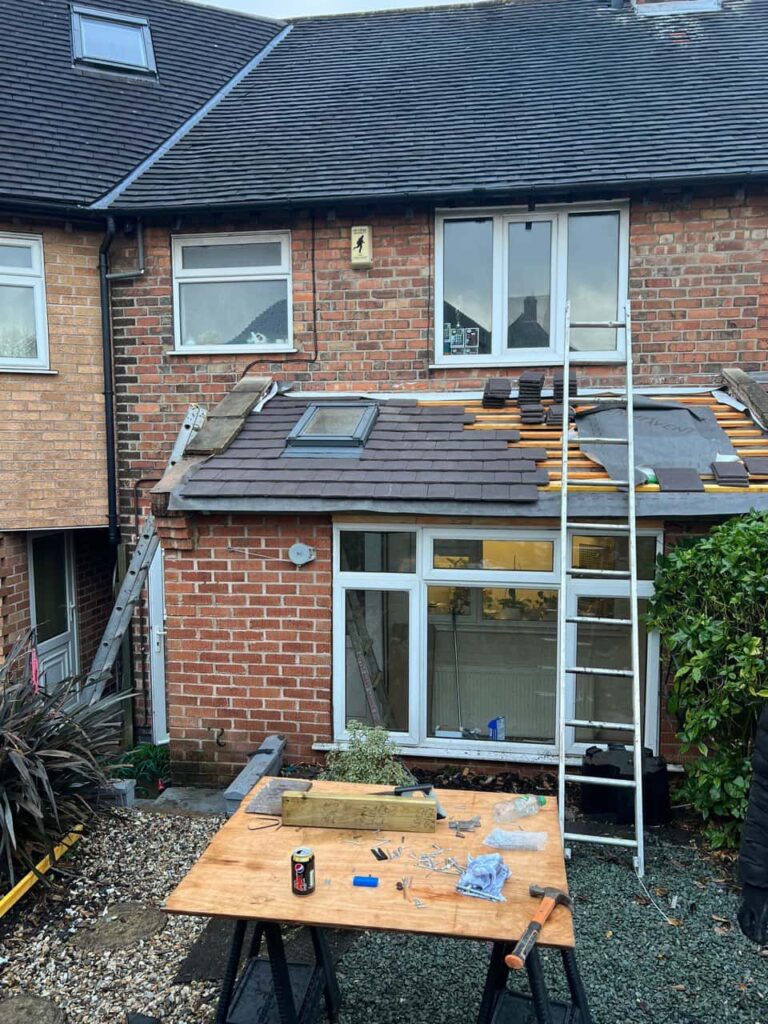Understanding the type of roof you have is essential when it comes to maintenance, repairs, or planning improvements to your property. Different roof types require different materials, inspection routines, and repair techniques. At Bolsover Roofing Repairs in Bolsover, Derbyshire, we often help homeowners determine their roof type so they can make informed decisions and ensure any roofing work is carried out to the highest standard.
Why It Matters
Knowing your roof type is more than just a technical detail. It influences:
- How rainwater is drained
- What kind of materials should be used
- The cost and method of repairs or replacements
- How easily the roof can be insulated or ventilated
- Whether planning permission may be required for alterations
Here’s how you can identify the most common roof types found on UK properties.
1. Pitched Roof
This is the most common type of roof in the UK. A pitched roof has two sloping sides that meet at a central ridge, forming a triangular shape.
Key features:
- Efficient water run-off
- Can be tiled with slate, clay, or concrete
- Space underneath often used as a loft
Pitched roofs are durable and offer excellent drainage, making them ideal for the British climate.
2. Gable Roof
A variation of the pitched roof, a gable roof is recognised by its two sloping sides and a vertical triangular wall at each end, known as the gable.
Key features:
- Common on detached and semi-detached homes
- Simple design makes repairs straightforward
- Vulnerable to wind damage at the gable ends if not properly maintained
3. Hip Roof
A hip roof has slopes on all four sides, which come together at a ridge or a single point.
Key features:
- More complex structure
- Very stable and wind-resistant
- Often more costly to repair or replace due to additional materials and labour
Hip roofs are commonly seen on bungalows and detached properties.
4. Flat Roof
Found on extensions, garages, and some modern properties, flat roofs are horizontal or have a very shallow pitch to allow water drainage.
Key features:
- Typically covered in felt, EPDM rubber, or GRP fibreglass
- Require regular maintenance to prevent pooling and leaks
- Lifespan depends heavily on material quality and installation
5. Mono-Pitched Roof
This is a single slope roof, often used on extensions or modern builds.
Key features:
- Simple and cost-effective design
- Ideal for creating a contemporary look
- Requires careful planning for water run-off and insulation
6. Dormer Roof
A dormer roof includes a structure that projects out from a pitched roof, usually housing a window. This is common in loft conversions.
Key features:
- Provides additional headroom and light in attic spaces
- Requires proper flashing to prevent leaks around the dormer
- May have its own mini gable or flat roof
7. Mansard Roof
More commonly seen on older or period properties, a mansard roof has two slopes on each side, with the lower slope steeper than the upper.
Key features:
- Maximises internal space
- Architecturally distinctive
- Complex and more expensive to maintain or repair
How to Be Sure
Visual clues can give you a good idea of your roof type, but for a complete and accurate assessment—especially if you’re planning work—it’s best to have a professional inspection. At Bolsover Roofing Repairs, we provide expert advice tailored to your specific roof structure and condition.
We also consider roofing materials, age, drainage features, and ventilation systems to give you a comprehensive understanding of your roof and what it needs.
Conclusion
Identifying your roof type is the first step to proper maintenance and long-term protection for your home. Each type comes with its own set of characteristics, and understanding these helps you plan ahead and avoid costly issues.
If you’re unsure about your roof or want tailored advice, contact Bolsover Roofing Repairs in Bolsover, Derbyshire. We’re here to help with inspections, repairs, and full roof replacements—always carried out with professionalism and precision.
Call us on: 01246 948 690
Click here to find out more about Bolsover Roofing Repairs
Click here to complete our contact form and see how we can help with your roofing needs.

